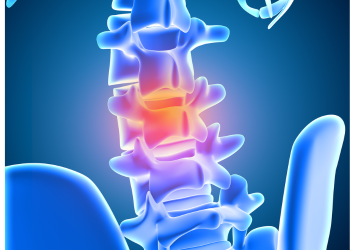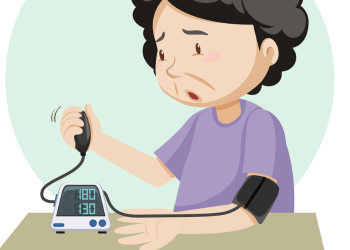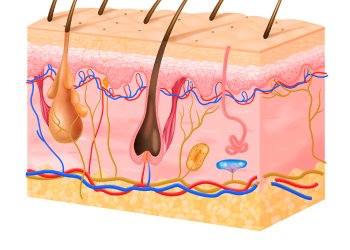
Colic is
frequent, prolonged, and intense crying or fussiness in a healthy infant. Colic
can be particularly frustrating for parents because the baby's distress occurs
for no apparent reason and no amount of consoling seems to bring any relief.
These episodes often occur in the evening, when parents themselves are often
tired.
Episodes of
colic usually peak when an infant is about 6 weeks old and decline
significantly after 3 to 4 months of age.
HOMEOPATHY is
a very effective mode of intervention in colic, and it can provide relief with
medications selected on symptom similarity.
Symptoms
Babies
have been known to fuss and cry, especially during the first three months of
life. In general, colic is defined as crying for three or more hours a day,
three or more days a week, for three or more weeks.
Intense crying
that may seem more like screaming or an expression of pain
Crying for no
apparent reason, unlike crying to express hunger or the need for a diaper
change
Extreme fussiness
even after crying has diminished
Predictable
timing, with episodes often occurring in the evening
Facial discolouring,
such as skin flushing or blushing
Body tension, such
as pulled up or stiffened legs, stiffened arms, clenched fists, arched back, or
tense abdomen
Sometimes
there is relief in symptoms after the infant passes gas or has a bowel
movement. Gas is likely the result of swallowed air during prolonged crying.
Causes
The
cause of colic is unknown. It may result from numerous contributing factors Possible
contributing factors that have been explored include:
Digestive system
that isn't fully developed
Imbalance of
healthy bacteria in the digestive tract
Food allergies or
intolerances
Overfeeding,
underfeeding, or infrequent burping
Early form of
childhood migraine
Family stress or
anxiety
Risk
factors
Sex of the child
Preterm and
full-term pregnancies
Formula-fed and
breast-fed babies
Infants
born to mothers who smoked during pregnancy or after delivery have an increased
risk of developing colic.
Diagnosis
Measuring your
baby's height, weight and head circumference
Listening to the
heart, lungs, and abdominal sounds
Examining the
limbs, fingers, toes, eyes, ears, and genitals
Assessing reaction
to touch or movement
Looking for signs
of rash, inflammation, or other signs of infection or allergies
Lab
tests, X-rays and other diagnostic tests aren't usually needed, but in unclear
cases they help to exclude other conditions as possible causes.
Treatment
The
primary goals are to soothe the child as much as possible.
Soothing strategies
Using a pacifier
Taking your infant
for a car ride or on a walk in a stroller
Walking around
with or rocking your baby
Swaddling your
baby in a blanket
Giving your baby a
warm bath
Rubbing your
infant's tummy or placing your baby on the tummy for a back rub
Playing an audio
of heartbeats or quiet, soothing sounds
Providing white
noise by running a white noise machine, a vacuum cleaner, or a clothes dryer in
a nearby room, or running a fan, or an air conditioner
Dimming the lights
and limiting other visual stimulation
Feeding practices
Changes
in feeding practices may also provide some relief. Bottle-feed your baby in an
upright position and burp frequently during and after a feeding. Using a curved
bottle will help with upright feeding, and a collapsible bag bottle can reduce
the intake of air.
Trial changes in diet
Formula changes. If
you feed your infant formula, your doctor may suggest a one-week trial of an
extensive hydrolysate formula that has proteins broken down into smaller sizes.
Maternal diet. If
you're breast-feeding, you may try a diet without common food allergens, such
as dairy, eggs, nuts and wheat. Mothers also try eliminating potentially
irritating foods, such as cabbage, onions, or caffeinated beverages.
Parent self-care
Caring
for an infant who has colic can be exhausting and stressful, even for
experienced parents. The following strategies can help you take care of
yourself and get the support you need:
Take a break. Take
turns with your spouse or partner, or ask a friend to take over for a while.
Give yourself an opportunity to get out of the house if possible.
Use the crib for
short breaks. It's OK to put your baby in the crib for a while during a
crying episode if you need to collect yourself or calm your own nerves.
Express your
feelings. It's normal for parents in this situation to feel helpless,
depressed, guilty, or angry. Share your feelings with family members, friends,
and your child's doctor.
Don't judge
yourself. Don't measure your success as a parent by how much your baby
cries. Colic isn't a result of poor parenting, and inconsolable crying isn't a
sign of your baby rejecting you.
Take care of your
health. Eat healthy foods. Make time for exercise, such as a brisk daily
walk. If you can, sleep when the baby sleeps even during the day. Avoid alcohol
and other drugs.
Remember that it's
temporary. Colic episodes often improve after age 3 to 4 months.
Have a rescue
plan. If possible, make a plan with a friend or relative to step in when
you're overwhelmed. If necessary, contact your health care provider, a local
crisis intervention service or a mental health help line for additional
support.
Alternative medicine
Herbal remedies, such as fennel oil
Sugar water
Gripe water, a mix of water and herbs
Massage therapy
Chiropractic manipulation
HOMEOPATHY
Homeopathic medicines are
way too effective for infantile colic. Homeopathy has a soothing effect on
babies during the crying period, and it cures the problem completely with well-selected
remedies like
Cina
Chamomilla
Sulphur





















